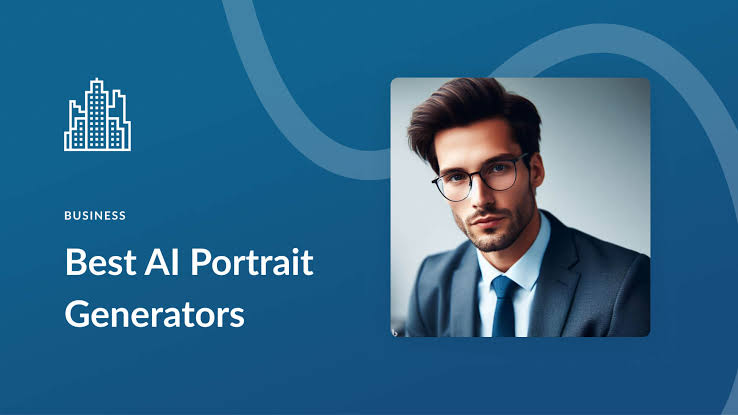The advent of artificial intelligence (AI) has revolutionized many fields including art and design. One of most intriguing applications of AI is in portrait generation. This technology can create highly realistic and personalized portraits. Often indistinguishable from those created by human artists. AI-powered portrait generation combines deep learning algorithms, extensive datasets and advanced computing power. It produces portraits that capture intricate details expressions and even artistic styles. This guide explores process, benefits and implications of AI-powered portrait generation. Shedding light on how this technology is transforming the way we create and experience portraits.
AI-powered portrait generation relies on machine learning. Specifically deep learning techniques. To create images of human faces. These techniques involve training neural networks on vast datasets of facial images. Enabling AI to learn patterns features and nuances of human faces. Once trained, AI can generate new portraits based on learned data. Producing images that are often strikingly realistic.
One of most popular approaches in AI portrait generation is use of Generative Adversarial Networks (GANs). GANs consist of two neural networks. The generator and the discriminator. The generator creates images. The discriminator evaluates them for authenticity. Through an iterative process the generator improves its output. Until it can produce images that discriminator deems as real as actual photographs.
The Process of AI Portrait Generation
The process of AI-powered portrait generation involves several steps:
1. Data Collection: The first step is gathering a large dataset of facial images. This dataset should be diverse, including various ages, genders, ethnicities, and expressions to ensure the AI learns a wide range of features.
2. Training the Model: The neural network is trained using the collected dataset. During training, the AI learns to recognize facial features, proportions, and other characteristics. This phase requires significant computational power and time, as the AI needs to process millions of images.
3. Generation: Once trained, the AI can generate new portraits. The user can input specific parameters, such as age, gender, hairstyle, or expression, to customize the generated portrait. The AI uses these inputs to create an image that meets the specified criteria.
4. Refinement: The generated image may undergo further refinement to enhance details and improve realism. This can involve additional algorithms or manual adjustments by artists or designers.
Applications of AI-Powered Portrait Generation
The ability to generate realistic and personalized portraits has numerous applications across various industries:
1. Art and Entertainment: AI-generated portraits are used in digital art, movies, video games, and virtual reality experiences. Artists can create unique characters and avatars without the need for live models.
2. Marketing and Advertising: Brands use AI portraits to create personalized marketing materials. Customized images can resonate more with target audiences, increasing engagement and conversion rates.
3. Fashion and Beauty: AI-generated models can showcase clothing and accessories, allowing designers to visualize their creations on different body types and facial features. This technology also aids in creating virtual makeup applications.
4. Social Media: Users can create unique profile pictures and avatars for social media platforms. AI portraits offer a fun and creative way to express individuality online.
5. Historical and Educational Purposes: AI can recreate historical figures or generate images for educational content. This application helps bring history to life and enhances learning experiences.
Challenges and Ethical Considerations
While AI-powered portrait generation offers many benefits, it also presents challenges and ethical considerations:
1. Data Privacy: The use of personal images for training AI models raises privacy concerns. Ensuring that datasets are collected and used ethically is crucial to protect individuals' privacy rights.
2. Bias and Fairness: AI models can inherit biases present in the training data. If the dataset lacks diversity, the AI may produce biased or stereotypical portraits. It's essential to use diverse and representative datasets to mitigate bias.
3. Authenticity and Trust: The realism of AI-generated portraits can blur the line between real and artificial images. This raises questions about authenticity and trust, particularly in contexts where verifying the source of an image is important.
4. Creativity and Originality: While AI can generate impressive portraits, there is an ongoing debate about the role of human creativity in the process. Some argue that AI-generated art lacks the intentionality and emotional depth of human-created art.
Future Directions and Innovations
The field of AI-powered portrait generation is rapidly evolving, with ongoing research and innovations aimed at improving the technology:
1. Improved Realism: Researchers are working on enhancing the realism of AI-generated portraits by refining algorithms and using more sophisticated neural networks. This includes better rendering of details like hair, skin texture, and expressions.
2. Interactive Tools: Future tools may allow users to interact with AI models in real-time, making adjustments and seeing instant results. This interactivity can enhance the creative process and offer more control over the final output.
3. Integration with Other Technologies: AI portrait generation is likely to integrate with other emerging technologies, such as augmented reality (AR) and virtual reality (VR). This integration can create immersive experiences where users interact with AI-generated avatars in virtual environments.
4. Ethical Frameworks: Developing ethical frameworks and guidelines for the use of AI in portrait generation is crucial. These frameworks will address issues related to privacy, bias, and the responsible use of technology.
Conclusion
AI-powered portrait generation represents a significant advancement in the intersection of technology and art. By leveraging deep learning algorithms and vast datasets, AI can create realistic and personalized portraits with diverse applications across various industries. While the technology offers numerous benefits, it also presents challenges and ethical considerations that need to be addressed. As research and innovation continue, AI portrait generation is poised to become even more sophisticated, offering new possibilities for creativity and expression. By understanding and navigating the complexities of this technology, we can harness its potential to create impactful and meaningful visual experiences.
